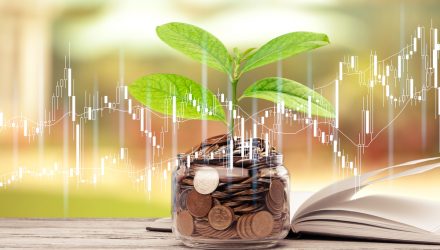With the global recovery peaking — and concerns about inflation, rising rates, and fuller valuations just getting started — how can advisors best implement ESG strategies to help their clients navigate today’s challenging markets?
In the upcoming webcast, How to Use ESG Factors to Navigate the Recovery, Jordan Farris, Managing Director, Head of ETF Product Development, Nuveen; Lauren Ferry, Managing Director, Head of Portfolio Strategists, Nuveen; and Megan Fielding, Senior Director, Responsible Investing, Nuveen, will explore how ESG investing has the potential to uniquely manage risk and return and help clients meet their financial goals.
Investors can fill out their equity portfolios with U.S. ESG equity-related ETFs, such as the Nuveen ESG Large-Cap Value ETF (BATS: NULV), the Nuveen ESG Large-Cap Growth ETF (NULG), the Nuveen ESG Mid-Cap Value ETF (NUMV), the Nuveen ESG Mid-Cap Growth ETF (NUMG), and the Nuveen ESG Small-Cap ETF (NUSC), which screen companies of various market capitalizations and asset categories for environmental, social, and governance principles.
The Nuveen ESG International Developed Markets Equity ETF (NUDM) and the Nuveen ESG Emerging Markets Equity ETF (NUEM) can also help align investors’ international equity investments with their values.
There is yet another option for fixed income investors who are interested in socially responsible investments. The Nuveen ESG U.S. Aggregate Bond ETF (NYSEArca: NUBD) and the Nuveen ESG High Yield Corporate Bond ETF (NUHY) help these investors pair their bond investment needs with ESG principles.
At Nuveen, the money manager employs several other ESG criteria to better target companies that exhibit socially responsible characteristics. Nuveen applies an ESG rating to capture an issuer’s performance on significant ESG risks relative to peers, a controversy score that captures an issuer’s exposure and response to event-driven controversies, a controversial business investment component that captures an issuer’s activity in industries that may cause significant social harm, and low-carbon criteria that captures the carbon intensity of an issuer based on involvement in specific industries.
The three ESG factors cover three broad categories. Environmental refers to climate change, greenhouse gas emissions, resource depletion (including water, waste and pollution), and deforestation. The social aspect covers working conditions (including child labor), community and indigenous populations, operations in conflict zones, health and safety, employee relations, and diversity. Lastly, the governance factor is based on executive pay, bribery, corruption, political lobbying and donations, board diversity and structure, and tax structure.
The responsible investment and ESG-related investment strategy is not intended to sacrifice performance or lower returns for the sake of achieving their goals. ESG investments have even shown to generate improved risk-adjusted returns over time.
Financial advisors who are interested in learning more about ESG investing can register for the Tuesday, September 14 webcast here.
